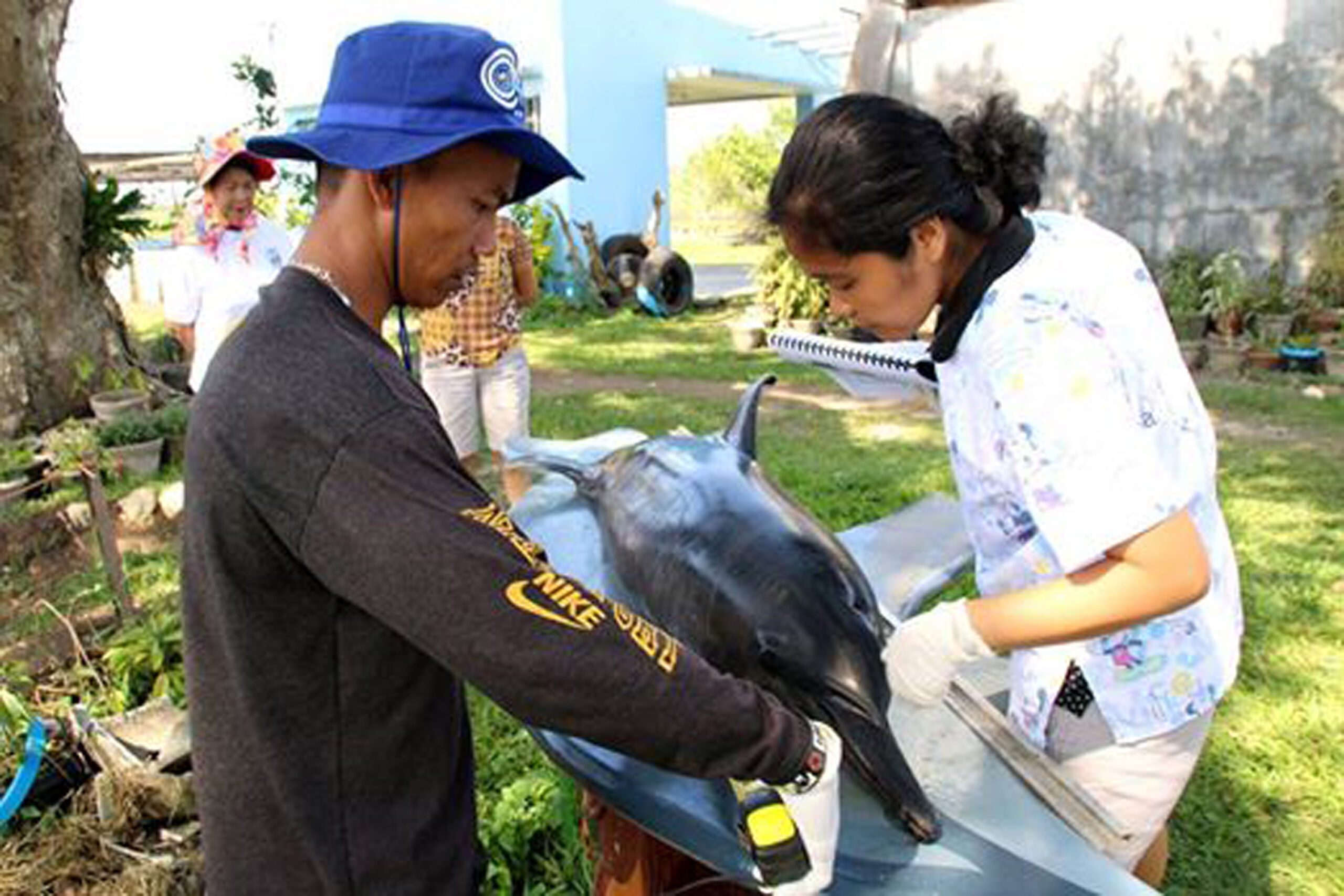SUMMARY
This is AI generated summarization, which may have errors. For context, always refer to the full article.

CAMARINES SUR, Philippines – Parasites from sea creatures that can affect humans killed two dolphins in Bicol, the Bureau of Fisheries and Aquatic Resources (BFAR) in Bicol reported here.
Dr Evelyn Saberon, BFAR veterinarian who conducted the necropsy of two stranded dolphins, said she found thread-like worms in the stomach of the dolphins found in Libon, Albay and Mercedes in Camarines Norte.
The Contracaecum parasite can also be found in humans.
Nonie Enolva, BFAR-Bicol Marine Fisheries Resources Management Section chief and spokesperson, said that a stranded adult female Spinner dolphin, measuring 1.6 meters in length and weighing 43 kilograms, was brought in for necropsy at the Regional Fisheries Health Management and Diagnostics Laboratory of the BFAR regional office on March 4, 2017.
“The carcass was brought in by BFAR’s Fisheries Emergency Stranding Response Team personnel who were deployed immediately to the area after residents reported the dolphin stranding on the same day,” Enolva said.
Spinner dolphins are well known for acrobatic acts as they spin their bodies when they emerge from the water.
Enolva said this is the 3rd reported “marine mammal stranding” in Bicol that has resulted in death this year. This came less than a week after another dolphin died in Mercedes despite rescue and release efforts last February 28, 2017.
After conducting a necropsy, Saberon found that the mammal had enteritis and its stomach and bladder were empty. This suggests that the animal had no food intake in the past few days prior to its death.
Petechial hemorrhaging (small red spots) was also detected in the animal’s intestines.
Contracaecum parasites – though not as severe as in the first dolphin – also contributed to its death.
“The parasites were still alive. These parasites weakened the animal until its death,” Saberon said.
Temperature changes
Sudden changes in temperature also contributed to the stress of the dolphin.
“The sudden changes in temperature contributed to the stress of the animal and that is why dolphin stranding is more common in this part of the year,” Saberon added.
Saberon explained that some parasites found in marine mammals are zoonotic or can infest more than one species.
“Parasites or their eggs may be carried through human or animal feces dumped in the sea [that] fish and even the marine mammals may feed on,” she said.
Blood and tissue samples were taken from the animal to the Marine Mammal Research Stranding Laboratory in UP Diliman for their Project LepTox.
Project LepTox is a research effort to investigate the occurrence of leptospirosis and toxoplasmosis, a disease caused by a certain parasite that also affects humans.
Megamouth shark
It will be recalled that in January 2015, a male megamouth shark was also stranded and found in the coast of Pioduran, Albay.
The shark was captured by 39-year-old Edgar Chavez – a fisherman from Barangay Marigondon in Pioduran, Albay – and his companions.
Enolva said the megamouth shark (scientific name: Megachasma pelagios) is also the 3rd biggest filter-feeding shark. A megamouth shark is among the rarest species in the world, weighing one ton with a life span of 100 years.
The megamouth shark can reach a maximum length of 17 feet and resides in great depths or deep water. It rises to the surface at night to feed on plankton.
Enolva said the megamouth shark is not edible as it contains poisonous toxins – it can have bio-accumulation of heavy metals. Once eaten by humans, it could cause infertility and even cancer.
The megamouth shark underwent taxidermy (all organs of the specimen were removed and its skin soaked in formalin) and stuffing for museum display.
The shark, through taxidermy, was preserved and displayed at the Albay Parks and Wildlife for scientific study, following the order of then Albay governor and now 2nd District Representative Joey Sarte Salceda
In July 2010, a giant Sperm whale that had started to decompose, was also washed ashore in the coastal town of Rapu-Rapu, Albay. – Rappler.com
Add a comment
How does this make you feel?















There are no comments yet. Add your comment to start the conversation.